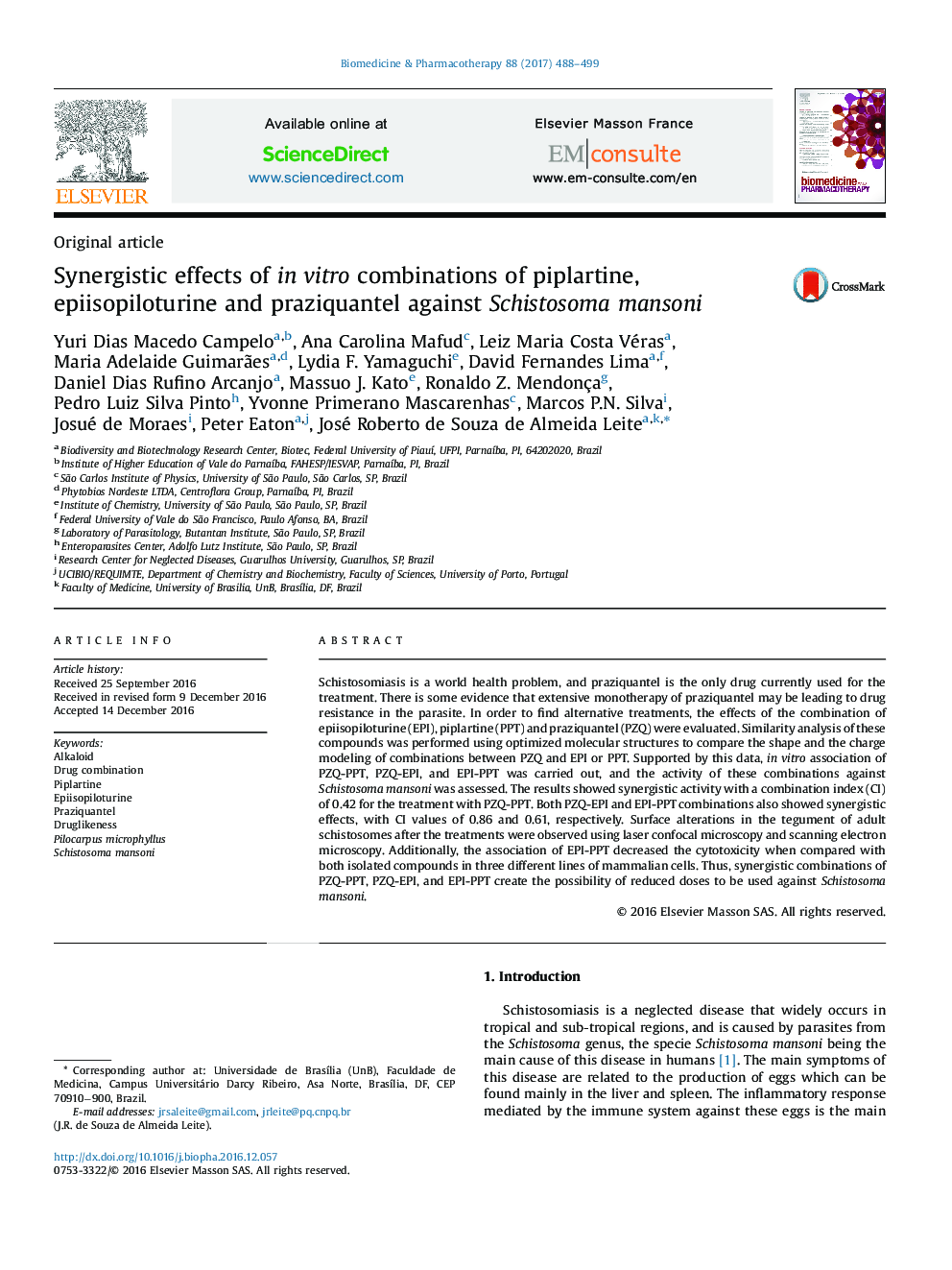| Article ID | Journal | Published Year | Pages | File Type |
|---|---|---|---|---|
| 5553169 | Biomedicine & Pharmacotherapy | 2017 | 12 Pages |
â¢The combinations of PZQ, EPI, and PPT are able to induce synergistic activity against Schistosoma mansoni.â¢The synergistic combinations of PZQ, EPI, and PPT induced surface alterations in the tegument of adult schistosomes after the treatments.â¢A decrease of cytotoxic effect of the synergistic combinations on mammalian cells was observed.
Schistosomiasis is a world health problem, and praziquantel is the only drug currently used for the treatment. There is some evidence that extensive monotherapy of praziquantel may be leading to drug resistance in the parasite. In order to find alternative treatments, the effects of the combination of epiisopiloturine (EPI), piplartine (PPT) and praziquantel (PZQ) were evaluated. Similarity analysis of these compounds was performed using optimized molecular structures to compare the shape and the charge modeling of combinations between PZQ and EPI or PPT. Supported by this data, in vitro association of PZQ-PPT, PZQ-EPI, and EPI-PPT was carried out, and the activity of these combinations against Schistosoma mansoni was assessed. The results showed synergistic activity with a combination index (CI) of 0.42 for the treatment with PZQ-PPT. Both PZQ-EPI and EPI-PPT combinations also showed synergistic effects, with CI values of 0.86 and 0.61, respectively. Surface alterations in the tegument of adult schistosomes after the treatments were observed using laser confocal microscopy and scanning electron microscopy. Additionally, the association of EPI-PPT decreased the cytotoxicity when compared with both isolated compounds in three different lines of mammalian cells. Thus, synergistic combinations of PZQ-PPT, PZQ-EPI, and EPI-PPT create the possibility of reduced doses to be used against Schistosoma mansoni.
